Table of Contents
Introduction: Teradacho
Teradachō is a low-key neighborhood in Osaka’s Abeno Ward, centered around Teradachō Station on the Osaka Loop Line. Nestled between the bustling Tennōji district and the slower-paced Momodani area—home to Ikuno Koreatown—it offers a more residential feel. The area is dotted with charming old shopping centers, family-run cafés, and traditional izakayas, giving it an authentic, local atmosphere. With no major tourist attractions, Teradachō is the perfect place for a leisurely stroll, offering a quiet escape from the crowds of Namba and Umeda.
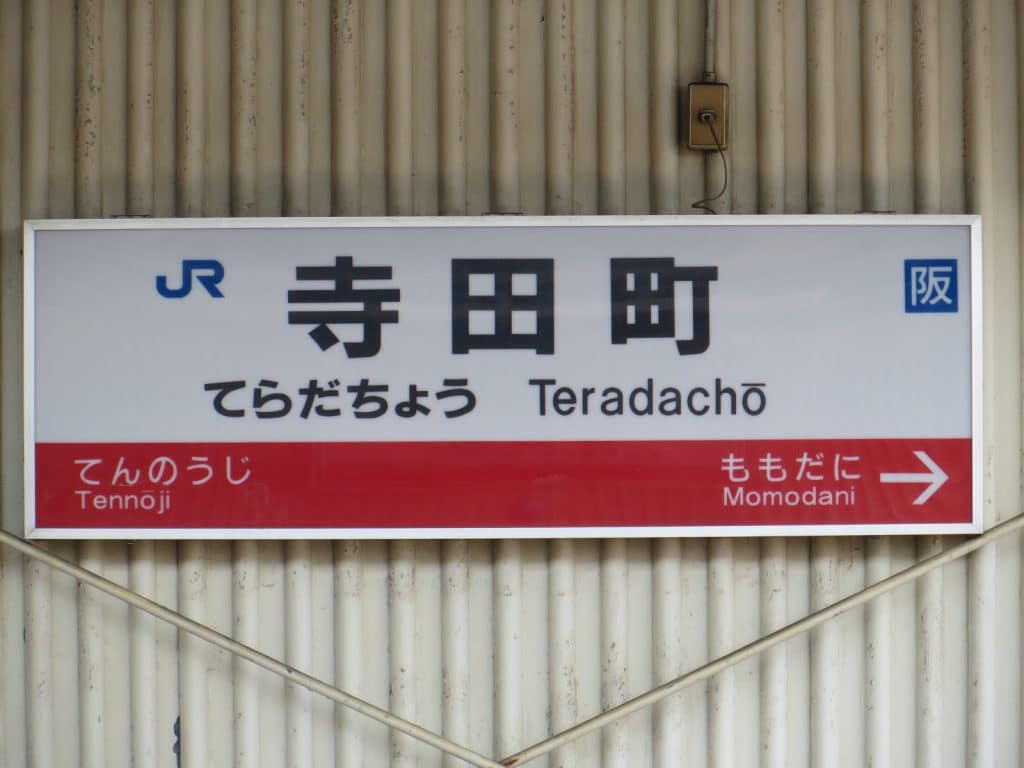
Cafe John Denver
Address: 2-6-13 Daido, Tennoji Ward, Osaka City, Japan 543-0052. Tel: 06-6779-3756. Open: 9:30-21:30. Closed: Sun.
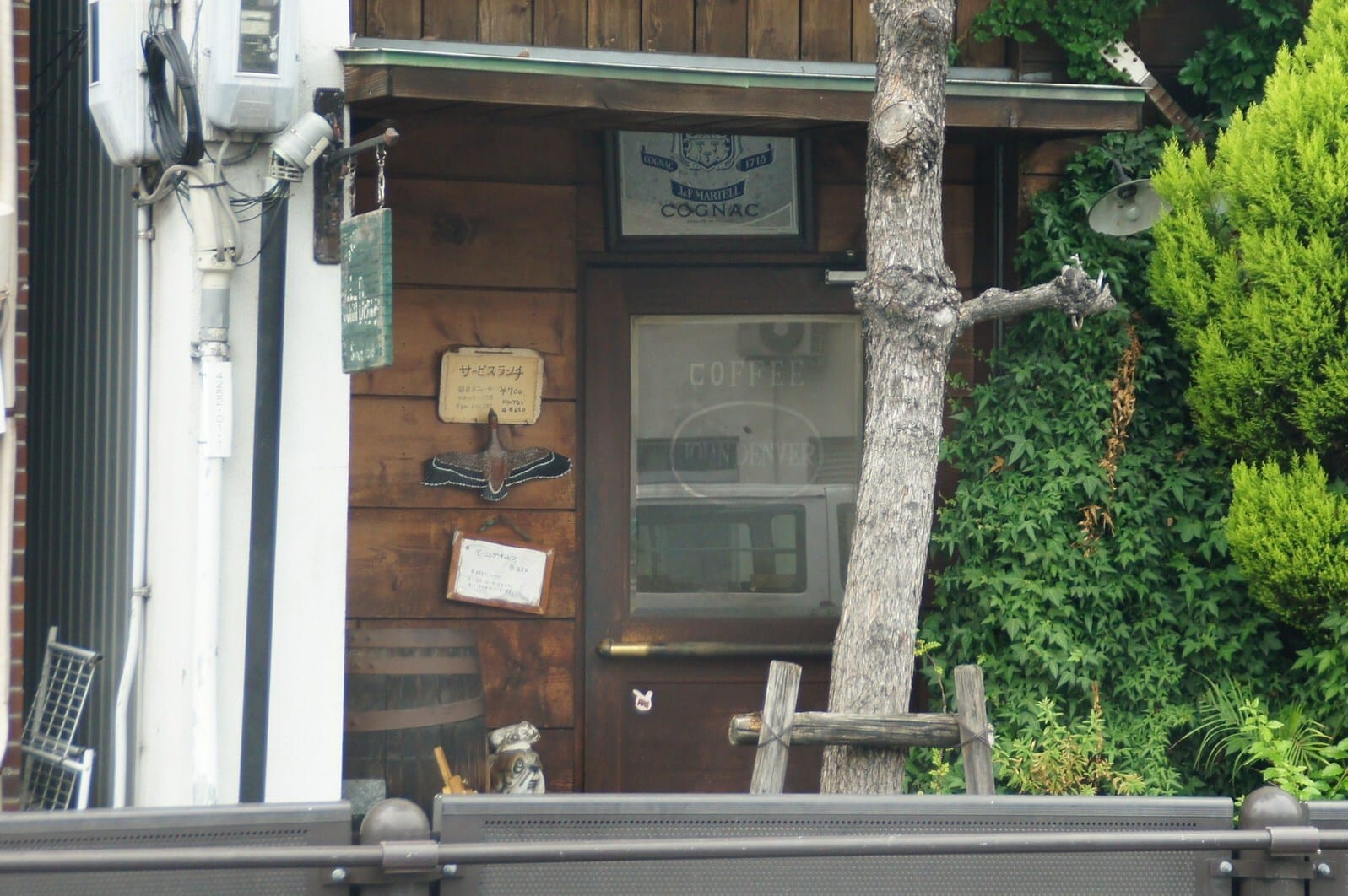
Cafe John Denver is just an 8-minute walk from Teradachō Station. This charming, rustic cafe—featuring hand-carved knick-knacks and an old barrel out front—feels completely out of place on a street lined with rather bland-colored apartment complexes and generic office buildings. The trees and vines in front of the cafe are the only touch of greenery on the entire block, making it seem like an oasis in the middle of the concrete jungle. This is one of my favorite cafes in Osaka and I can’t keep the smile off my face whenever I approach it.
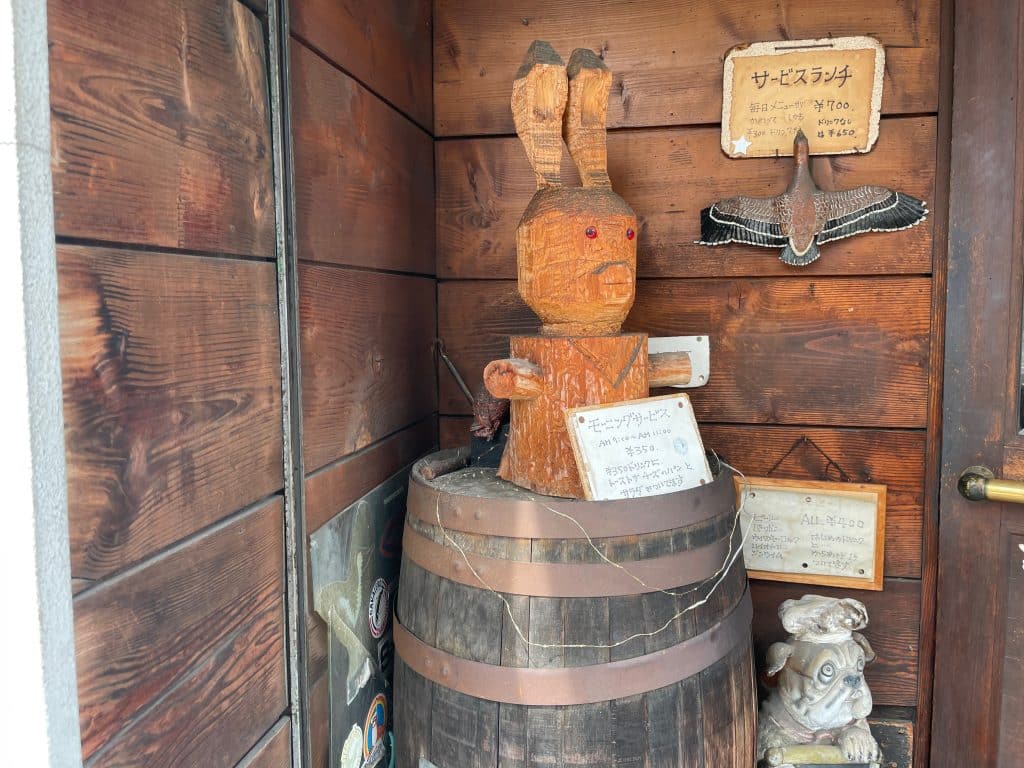
History of Cafe John Denver
I asked owner Hiromi Taniguchi, who opened the cafe in 1976, why she named it after the famous “Country Roads” singer. “It started off as a live house. At the time it was trendy for live houses to be named after a famous singer or group,” she answered. “I wanted to have country and western theme and someone suggested “John Denver.” So I bought one of his albums from a record shop.”
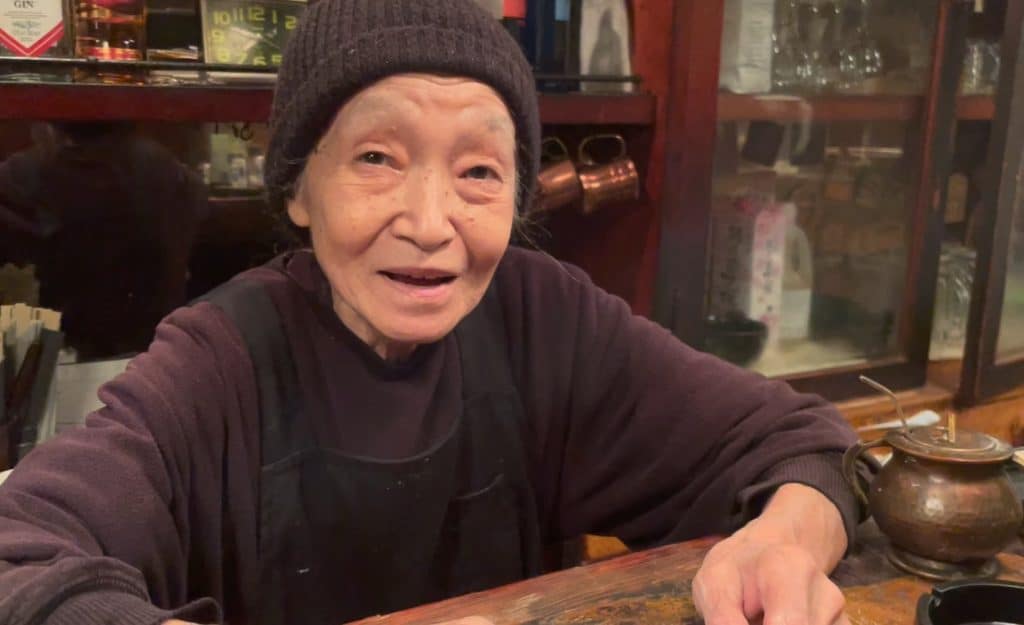
Although John Denver fans occasionally visit her shop, Taniguchi is quick to clarify that the official name is written in katakana as ジョンデンバー (Jondenbā) to avoid trademark issues. Still, it’s hard to imagine the late Sunshine on My Shoulders singer’s estate being concerned about a tiny Osaka café that has quietly honored him for the past 49 years, so I don’t think she has anything to worry about.
Vintage Vibes of the 1970s
Once inside, there’s no need to set your camera to sepia mode—the lighting is perfect, and the vintage feel is all natural. I can’t help but admire the worn wooden counter and the old, broken chairs, many of which are missing their backrests. Like many timeless spots, the coffee is brewed using a vintage siphon coffee maker, adding to the charm of the place.
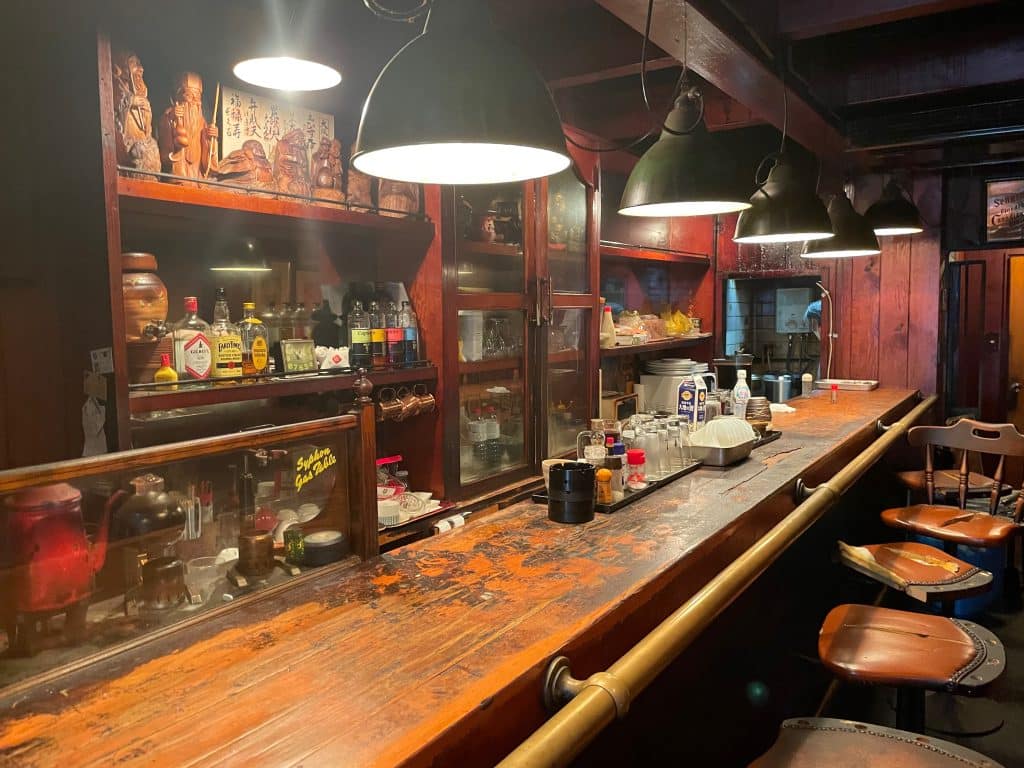
There are about a dozen wooden signs hanging on the wall with slogans written in English such as “Mafia Controlled: Watcha Your Step” and “I Don’t Mind Criticism As Long As It’s Outright Approval” Taniguchi-san told me that her father picked them up at an event in Japan to celebrate the US Bicentennial in 1976. Time has aged the signs, which were printed on a white background, to perfection.
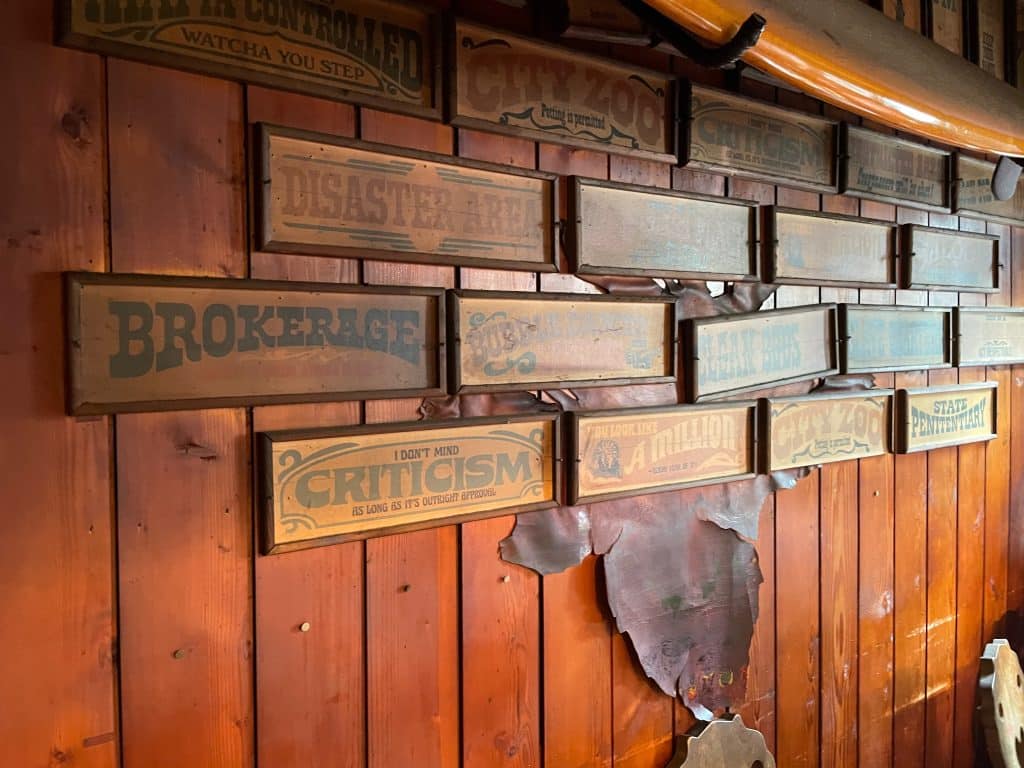
A Nodor dart board from the UK can be found next to the signs, but it doesn’t look like it has been used very much over the years. Perhaps the idea was scrapped after a few too many customers missed and put holes in the wall.
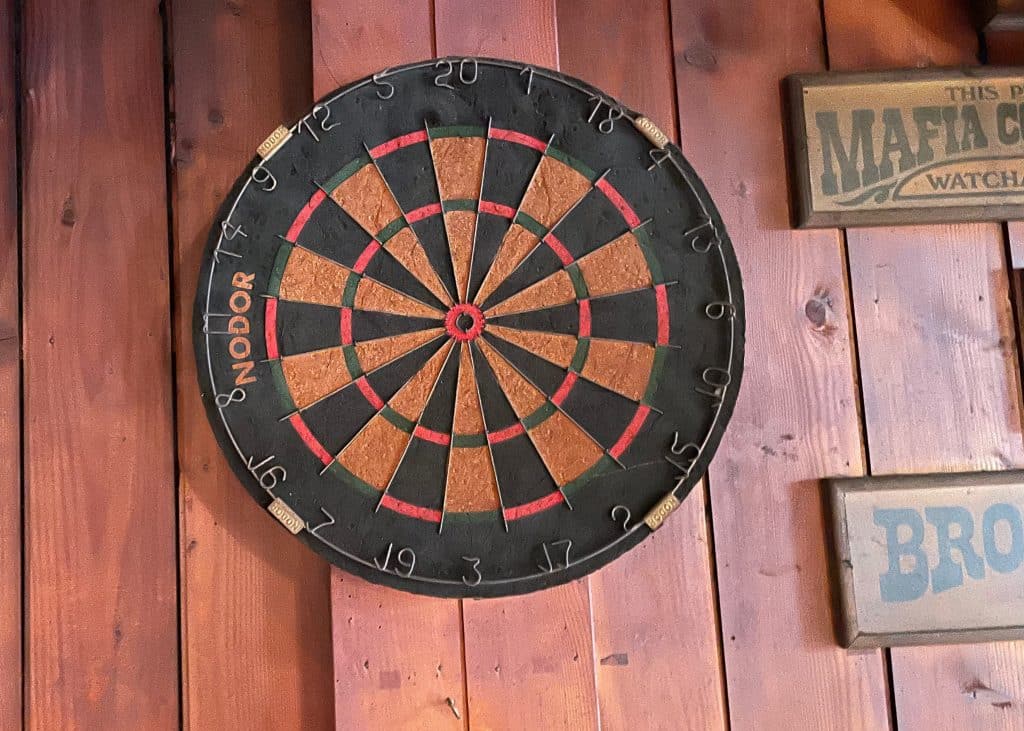
Manga Lovers Paradise
The cafe boasts a sizable collection of manga, spilling over from bookshelves into cardboard boxes stacked on the floor. For many manga fans, there’s no better way to spend an afternoon than sipping coffee at an old cafe while flipping through their favorite titles. I’ve heard that most young people now read manga on their phones, but I doubt it can match the experience of doing so in a cozy spot like this.

Lunch/Dinner Sets at Cafe John Denver
The prices at Cafe John Denver also seem stuck in another era. The Morning Set (9-11), which consists of coffee, toast and a salad (or coffee and a hot dog) is only 400 yen ($2.68). The coffee alone is worth that much in my humble opinion, so this is some deal, even with the weak yen.

The daily lunch set (available from 11:30 AM to 9:00 PM) is an even better deal at just 700 yen ($4.62), including a drink worth 400 yen. If you skip the drink, it’s only 650 yen. I couldn’t pass it up—an entire meal for just 200 yen more than what I’d typically spend on a coffee!
The lunch set included six items plus rice and soup. In addition to the chicken the set includes tonkatsu pork cutlet, shredded cabbage salad topped with pasta, nimono stewed vegetables with burdock root and konjac, spinach and wakame seaweed salad, tamagoyaki rolled egg, and nikogori, a dish made by simmering meat or fish in gelatin then cooking it. The photo doesn’t really capture the volume and density of this incredible set
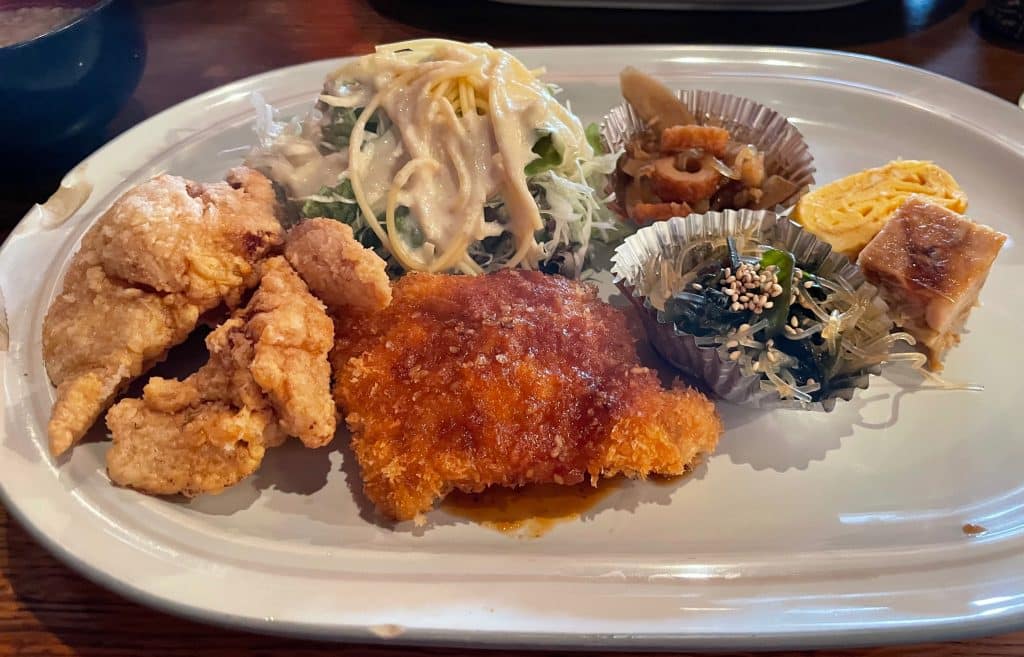
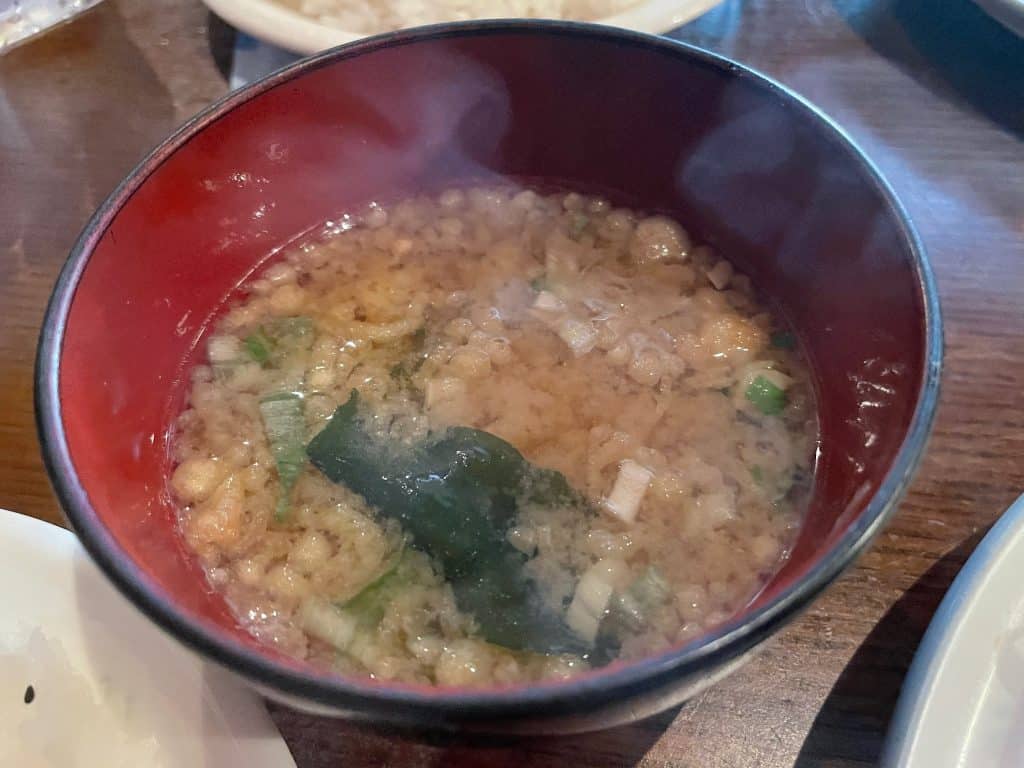

The first time I visited the cafe a few years back I got the “Hamburg Set” (850 yen/$5.62) which came with a fried egg, spaghetti and potato salad, not to mention a generous portion of rice and soup. Everything was made fresh, no instant-made ingredients.
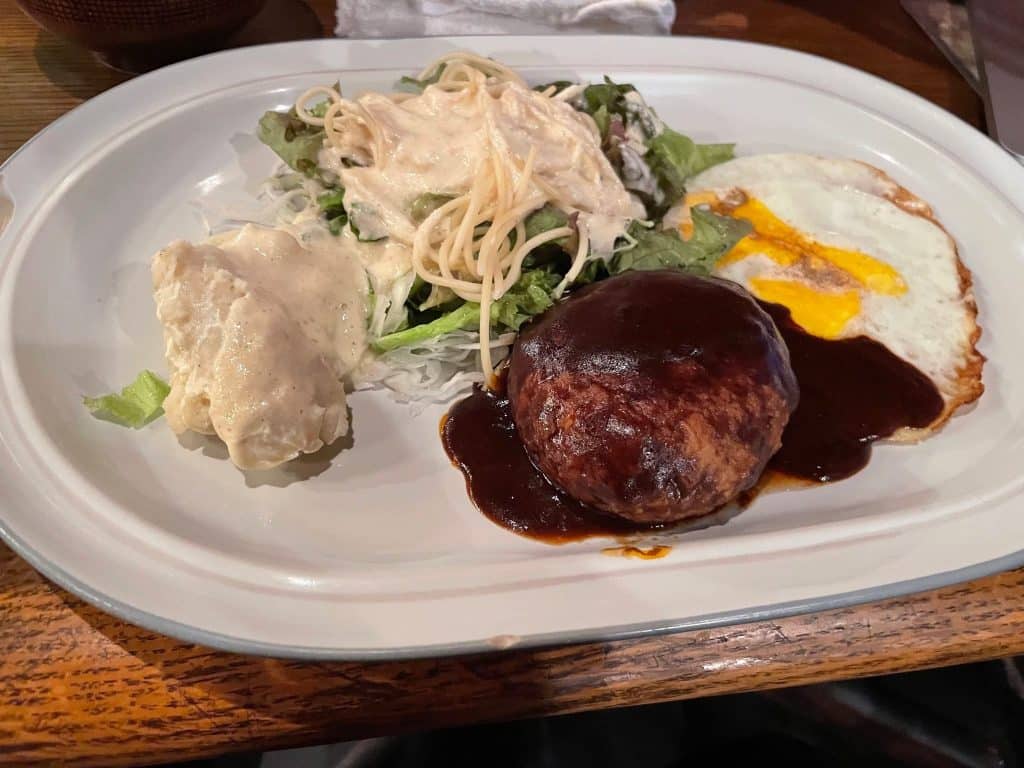
With no plans for the rest of the day, I decided to wander the neighborhood and walk off the meal. After settling my bill and saying goodbye to Taniguchi-san, I set off in search of interesting spots to photograph. Now, I’m no photographer (all these photos were taken with an iPhone 12 mini), and I didn’t edit or apply any filters. What you see is what you get—the good, the bad, and the ugly.
Ikuno Hondori Shotengai
After walking back to Teradacho Station, I headed north, not really paying much attention to my surroundings. Five minutes later I come across Ikuno Hondori Shotengai and decide to explore it. The 1 kilometer long shopping arcade started off as a public market in 1928 and was officially established in 1946. The character depicted on the sign is “Shota-Kun” a descendant of Prince Shotoku
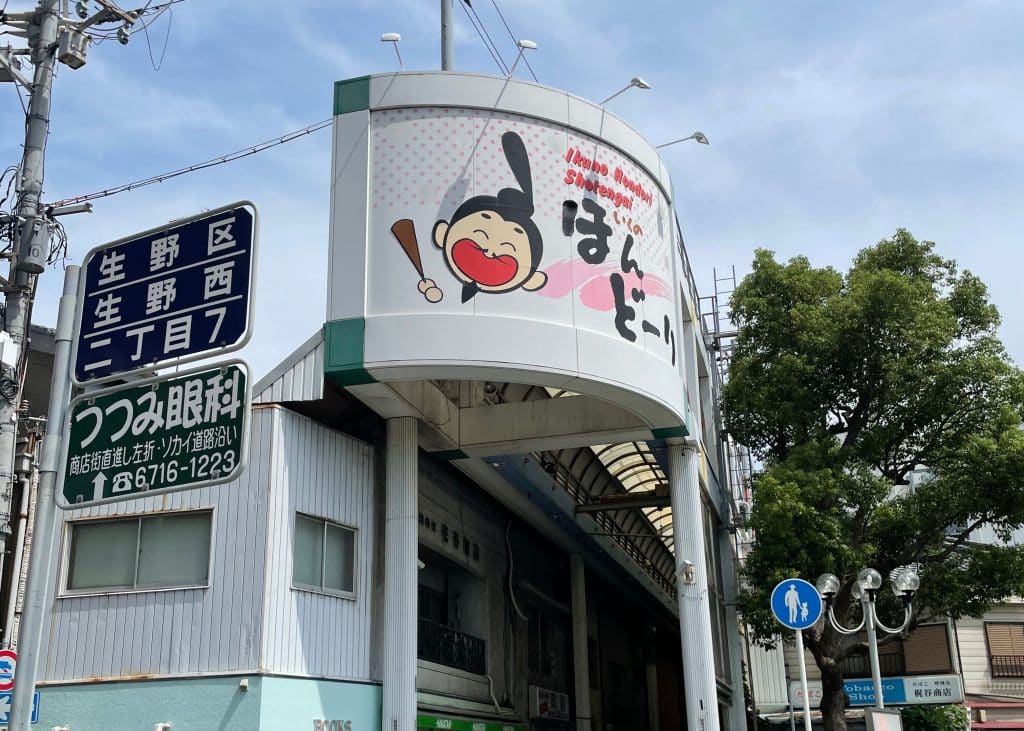
The name of this shop is “Zensai” and it specializes in kombu (昆布), or dried kelp, a key ingredient in Japanese cuisine, used for making dashi (soup stock) or eaten as a side dish. You can pick up shio-kombu (salted kelp), oboro-kombu (shaved kelp) and other kelp-based seasonings and snacks.
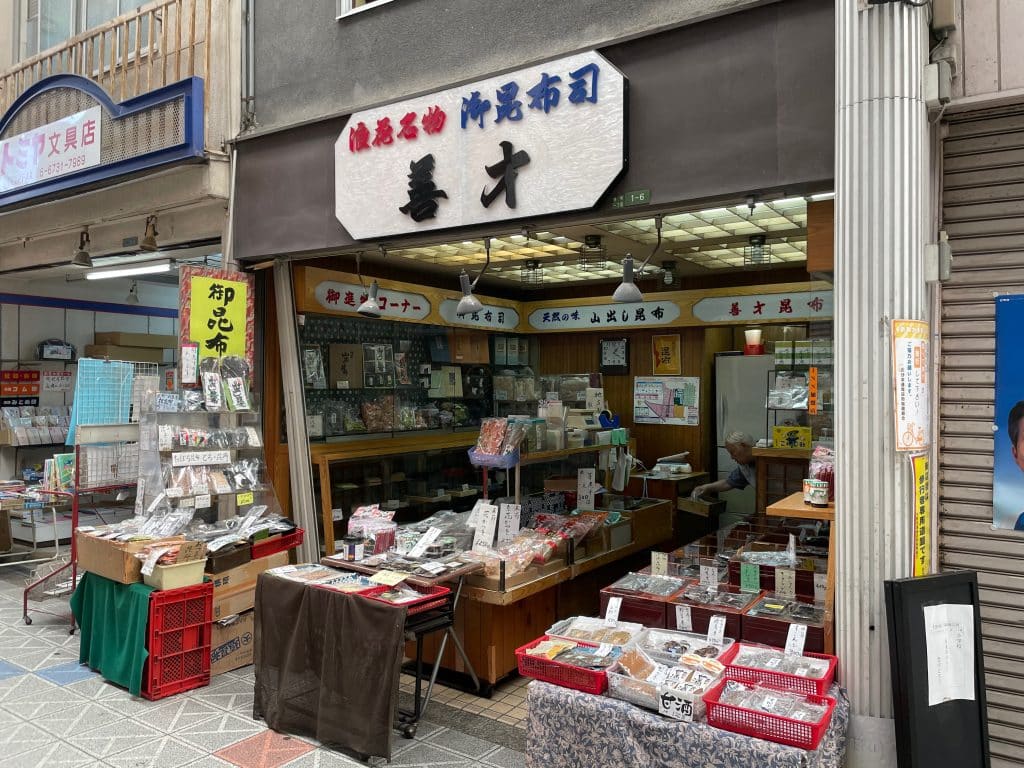
Barbershop Kawamura with old fashioned barbershop poles. I’ve seen many old barbershop signs written as “Bar Ber”, but I have no idea why. The sign on the window says: “Barbershops are Time Machines” because they can take the gray out of our hair and make us look younger. Powerful advertising.

I come across a box full of old lighters in front of a shop selling household products such as soap. Some of the lighters have hangul written on them, which makes sense because Ikuno Ward has the largest Korean population in Osaka.
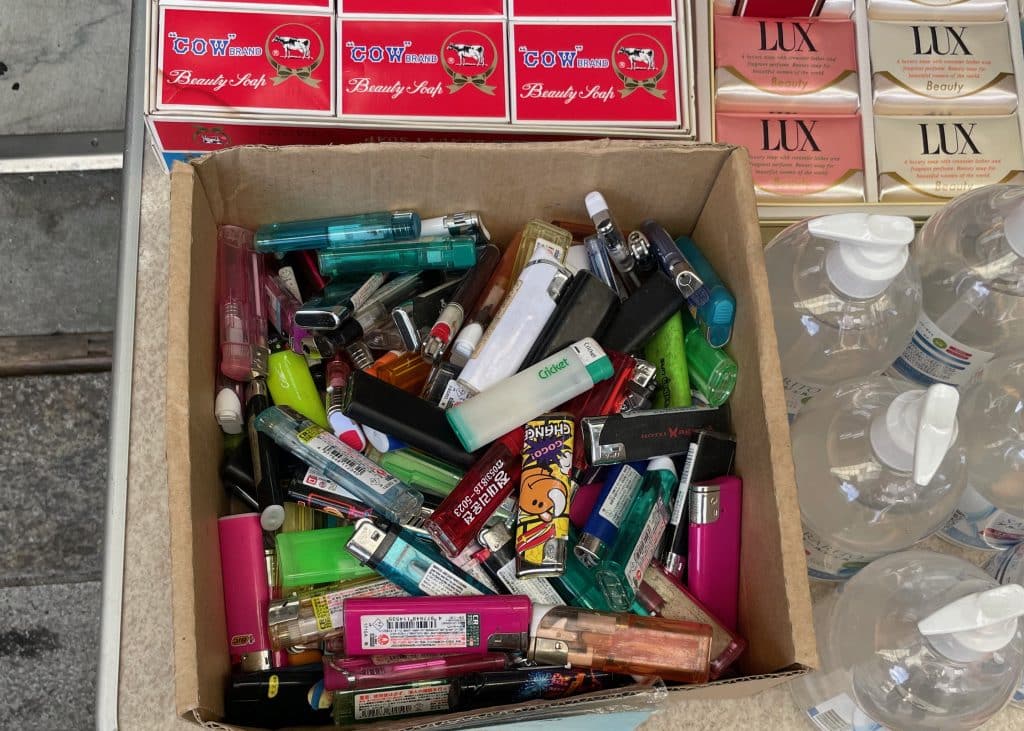
This shop specializes in Japanese tea (緑茶, ryokucha), a very popular item among tourists these days because of the health benefits. The price tags visible on the front indicate different varieties of tea being sold, with amounts like 300円 (yen) and 500円 (yen), which are common price points for loose-leaf tea or tea bags.

Coffee House New Tammy
Coffee House New Tammy has a very impressive sign with a bearded mascot holding a huge cup of coffee on the veryt top. I have always wondered how these one-of-a-kind signs are made. I imagine the mascot (Tammy?) is made of plastic, but I could be wrong. Whatever the case, it is nice to have this friendly fellow welcome me to the neighborhood.

A growing Vietnamese Community
Ikuno Ward, in addition to having the largest population of Korean resident in Osaka is also home to a growing Vietnamese community. Many immigrants contribute to Japanese society by starting businesses in old shopping arcades like this one and revitalizing the neighborhood. Proudly displayed Vietnamese flags like this one have become a common sight throughout many neighborhoods in Osaka.
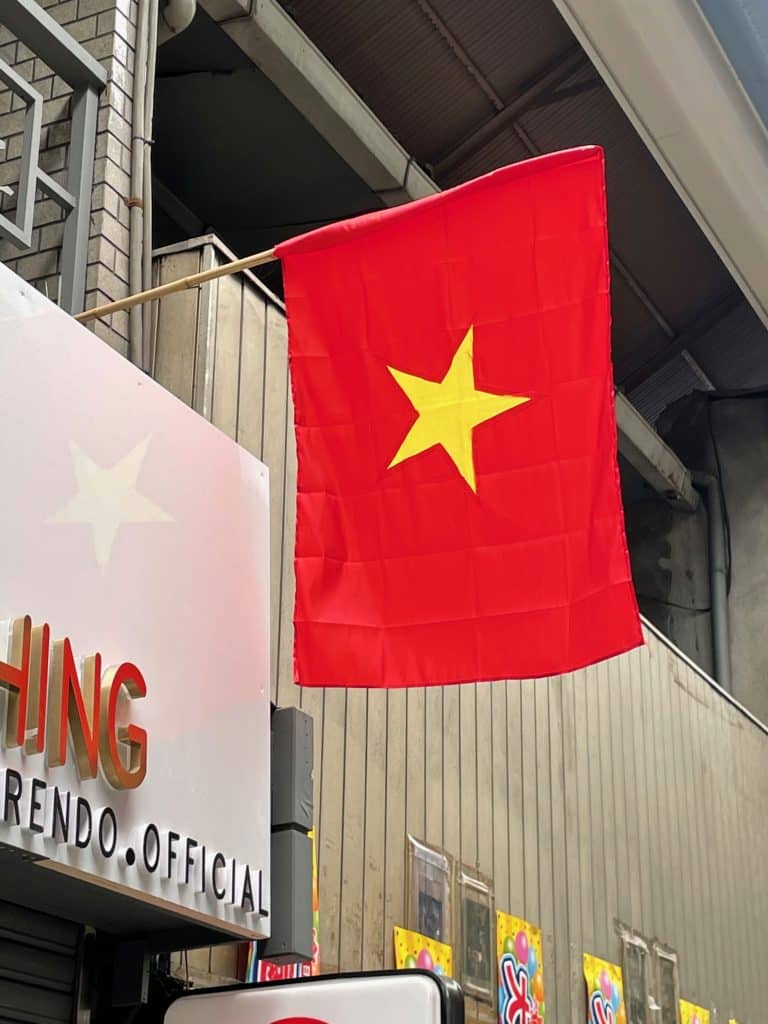
Vietnamese shop 38 Mart, specializes in wholesale meats and ingredients for Asian foods. I often buy pakuchi (coriander or cilantro) at these shops because the quality is often much higher than at Japanese supermarkets. Several Vietnamese shops in Osaka have 39 in their name because “san” and “kyu” (3 and 9) in Japanese sounds like “Thank You” in katakana English. Why 38? I had to look it up: “The number 3 (ba) symbolizes stability, growth, and intelligence.The number 8 (tám) is associated with prosperity and success, similar to Chinese beliefs. Together, 38 (ba tám) can be seen as a positive combination, suggesting stable prosperity or continuous growth.”
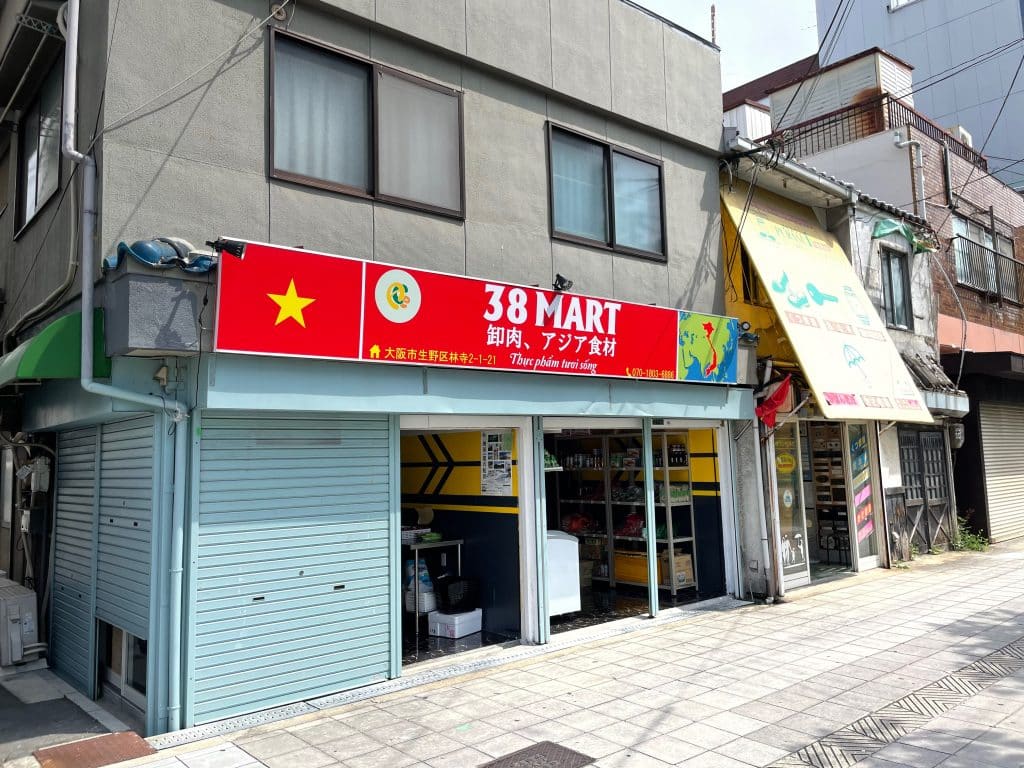
Fruit Shop Matsushita and Tanaka Clothing Store
Old Mom and Pop run fruit and vegetable stands are a staple of old shopping arcades. This is Fruit Shop Matsushita and it would make a great painting. I imagine it takes some time to display all of the fruit and put it all back in the shop on a daily basis. I enjoy shopping at these types of places because you can often have a nice chat with the owners, unlike the staff at a big supermarket.

Tanakaya Clothing Store. Not sure if it is permanently shuttered or just closed for the day. The staff of a politician running for office must have thought it was the perfect place to stick a campaign poster. I wonder the strategically-placed location got him any votes?

Ikuno Hondori Chuo Shotengai
I cross the street to the Ikuno Hondori Chuo shopping arcade, which seems to feature a lot more older shops, but I don’t come across many people here. It actually feels like I have the entire shopping arcade to myself, which I prefer to making my way through crowds of shoppers.
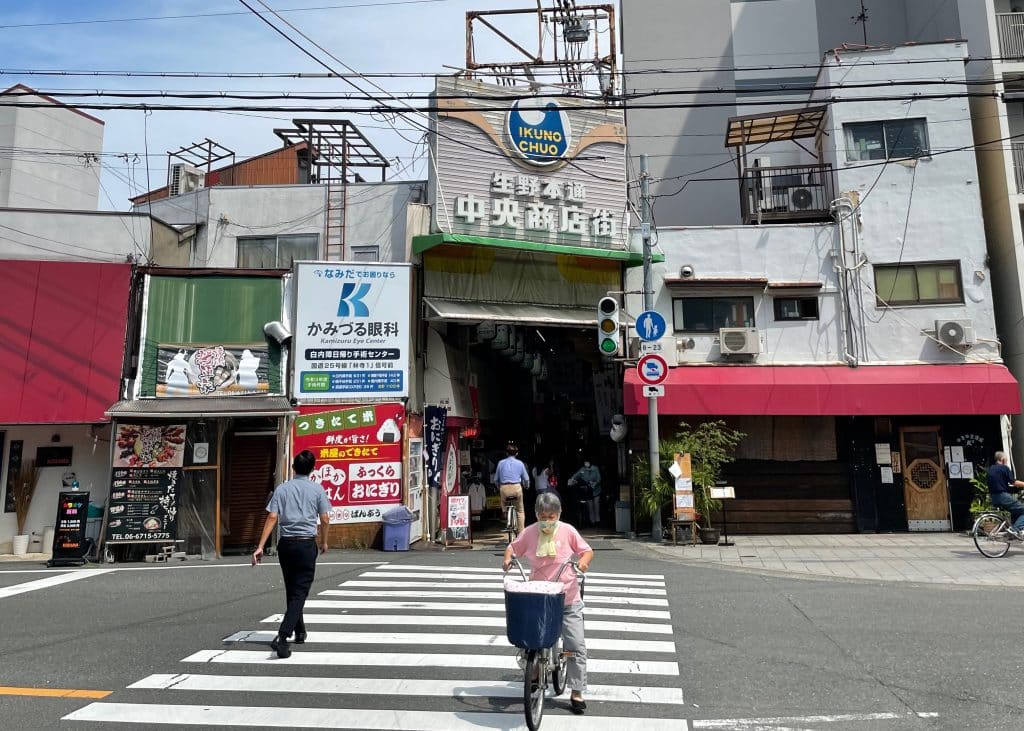
Bears and Cats on Parade
As I look up, I spot a familiar character overhead: Kumamon, the beloved mascot of Kumamoto Prefecture in Kyushu. Created in 2010 to promote the region and boost tourism, Kumamon quickly became a national sensation in Japan. With his round, bear-like shape and playful expression, he’s known for his quirky antics and has even appeared in various advertisements and merchandise, becoming an enduring symbol of Kumamoto’s charm.
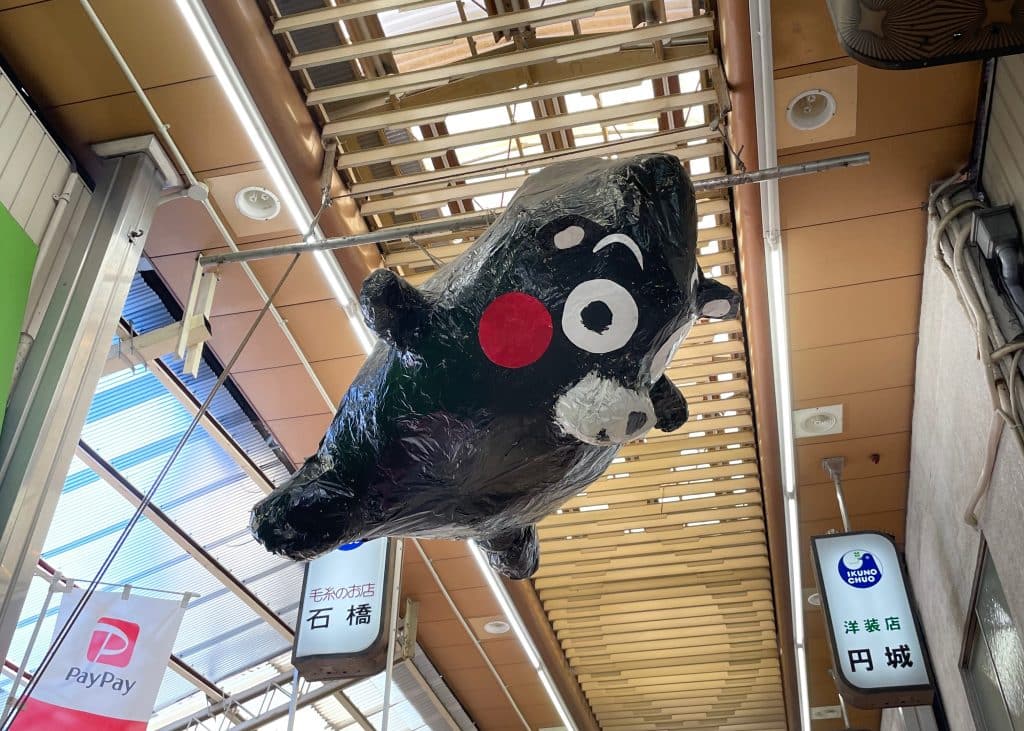
Nearby, I spot another inflatable character: a maneki neko, the iconic Japanese beckoning cat symbolizing prosperity and good fortune. Often depicted with one paw raised in a welcoming gesture, this charming cat is believed to attract wealth and success. Maneki neko can be found in homes and businesses throughout Japan, particularly in shops and restaurants, where they are thought to invite customers and bring good luck. The figure’s origin traces back to the Edo period, and it has since become a well-known emblem of positive energy and fortune.

Takaraya Vintage Toy Shop
As I walk a little further down, I hit the jackpot—an old, nostalgic toy shop filled with vintage treasures like Anpanman. Stepping closer, I can’t help but wonder if there are some real collectibles inside, the kind that could be flipped on eBay or Mercari for a profit. But instead of ending up in the hands of a reseller, I’d like to think a neighborhood kid will stumble upon them and take them home to play with, just as they were meant to be enjoyed.

A Step Back in Time
The old sign says “Yakinu Urano,” which suggests that it is a Korean BBQ restaurant, but this is actually a local meat shop.
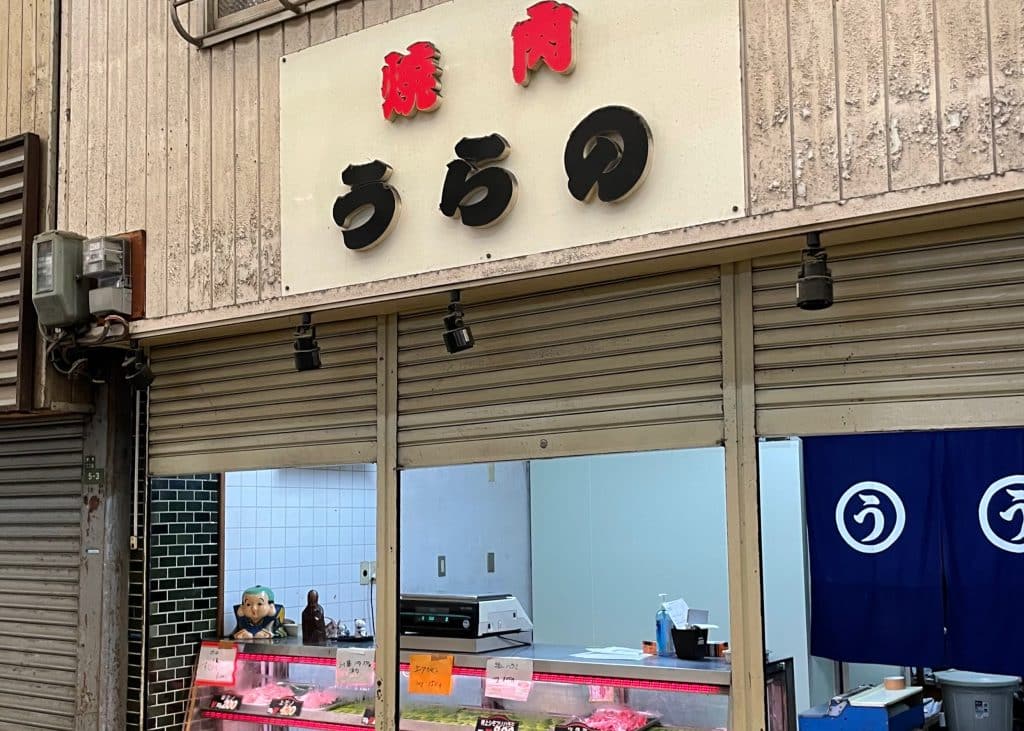
Yamazaki Shouten, a specialty shop with a hand-painted sign that sold nori (dried seaweed). I looked up the phone number, and it appears that the shop is long gone. The only photo I could find online just happened to be taken by one of my favorite Japanese photographers. It’s important to document these old shops before they disappear forever.

Shortest Shop Name in Japan?
This place must hold the record for the shortest name of an okonomiyaki and takoyaki restaurant in Japan: ん, which is simply “N” in Japanese. Intrigued by the simplicity, I’m already planning to come back and try their food. After all, with a name like that in Osaka, how could it not be delicious? I bet the owners were like “Our restaurant is so good that we don’t need to hype it with a fancy-sounding name!”

Compact Discs and Chinese Crepes
What do we have here? An old CD shop, which are rapidly disappearing. The poster outside is an advertisement for ther rock duo B’z, who just made a tremendous comeback on the Kohaku Uta Gassen show on New Years Eve. Wouldn’t it be a hoot if the shop took its name from the 1980s English pop group that sang “The Look of Love?” I’ll have to come back another time and peruse the racks.
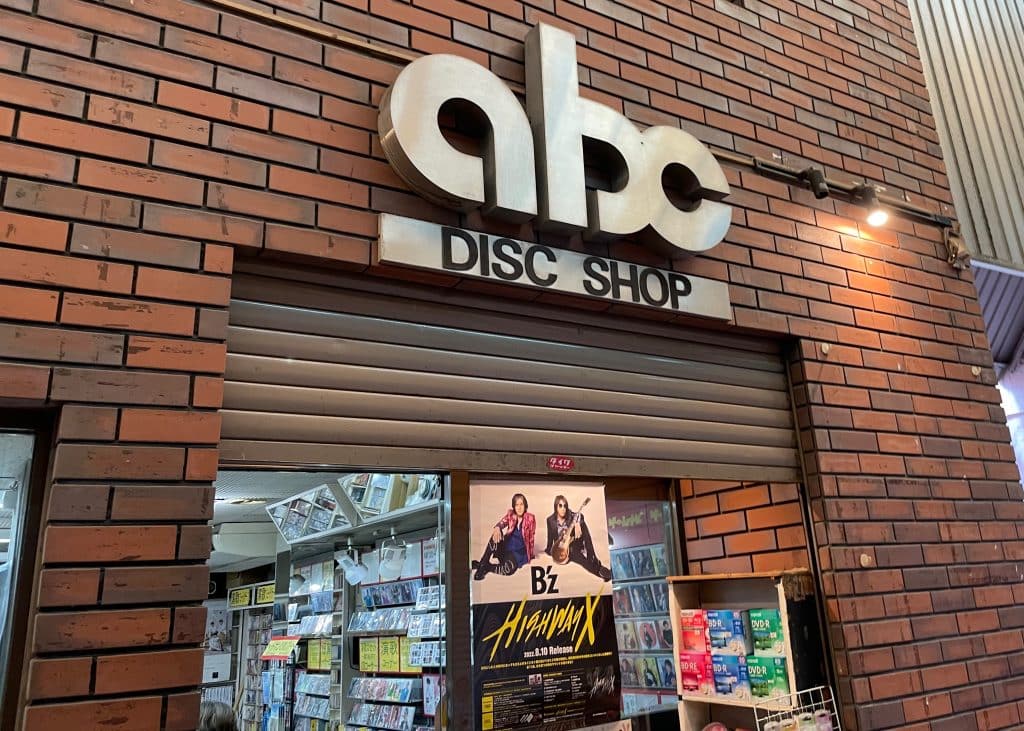
Having no idea what this next shop was, I had to look it up on Google maps. It appears to be a Chinese crepe shop, and judging by the reviews their crepes are made with high-quality tapioca and are delicious. They also sell Chinese candy and dried good. I noticed pork buns in the display case outside. Better than 551 Horai? Try one and let me know.

Recycle Shop and Pickled Veggies
This is Recycle Shop Ran. The display of merchandise outside was kind of haphazardly thrown together and looked like the aftermath of a wind storm with everything strung about, so I decided not to investigate what was inside. A better photographer would not have cut Anpan’s head out of the frame, but his head is usually eaten anyway so no loss.
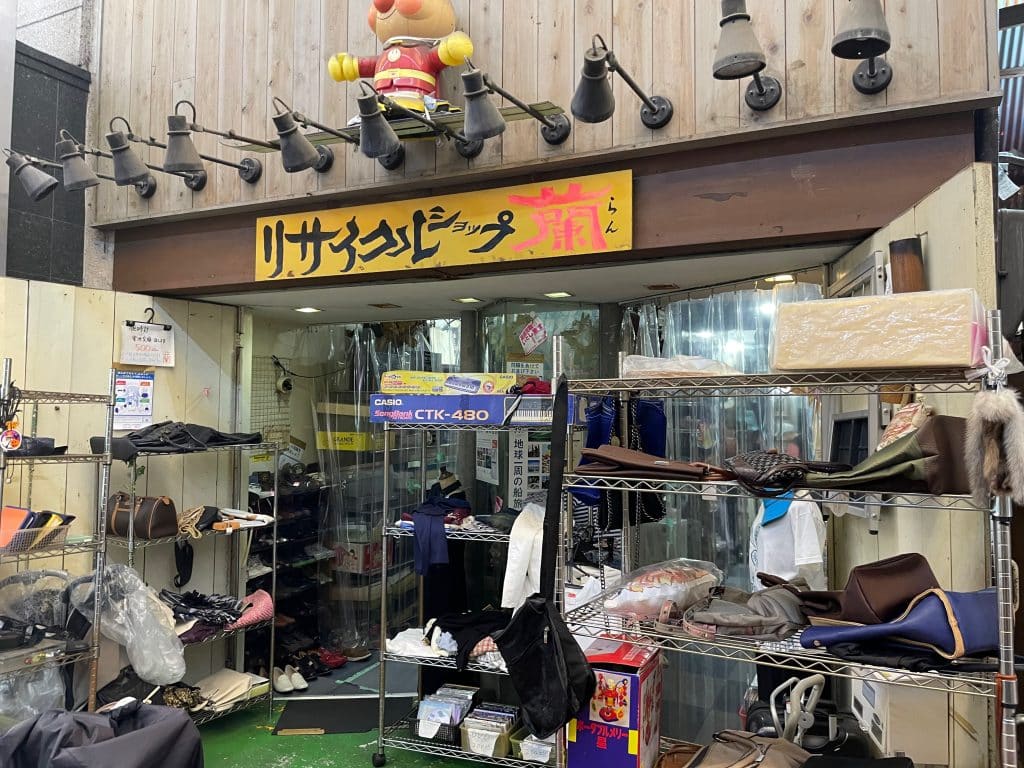
A small shop specializing in tsukemono (pickled vegetables) from Ise Prefecture. The hand painted vegetables on the sign make it easy to understand what they carry: cucumbers, eggplant, daikon and…what’s the last one, radish?
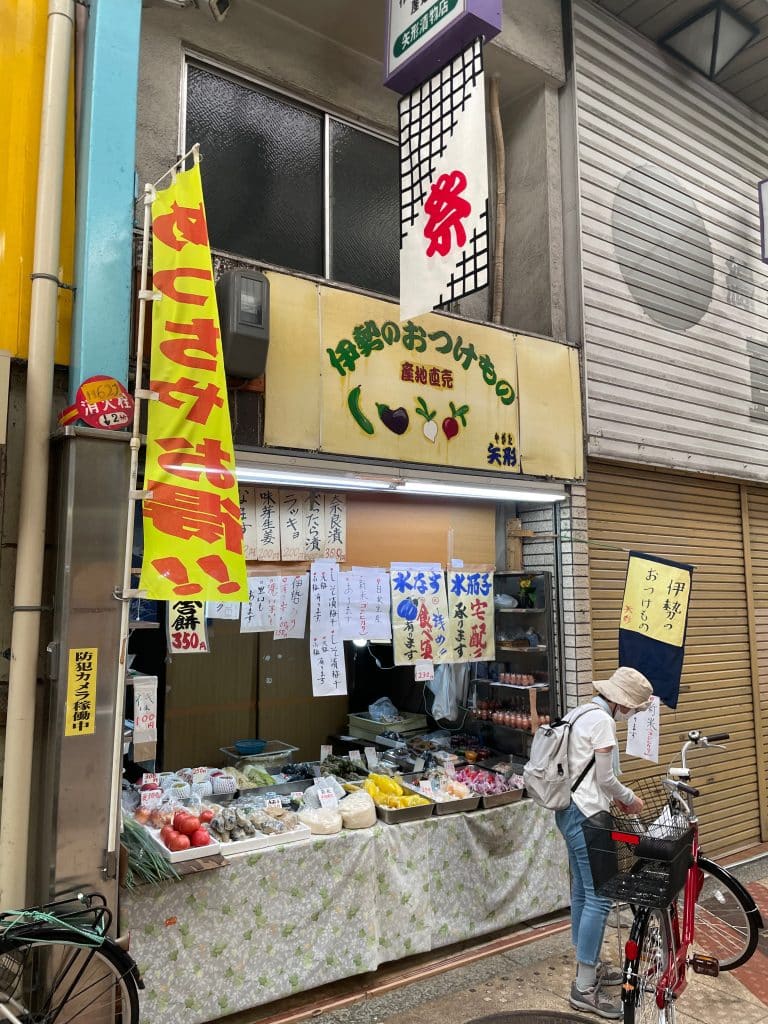
International Cuisine
The food at Pho Beo Vietnamese restaurants looks great (judging by the photos in the window) and the prices seem much lower than Namba or Umeda. Is this neighborhood the food is much less likely to be watered down for Japanese tastes.

I remember having to go all the way to Kobe to get authentic Indian food. Now there are Indian and Nepali restaurants near almost every station, and like Vietnamese restaurants, they are a common site in old shopping arcades in Osaka, revitalizing the neighborhood.
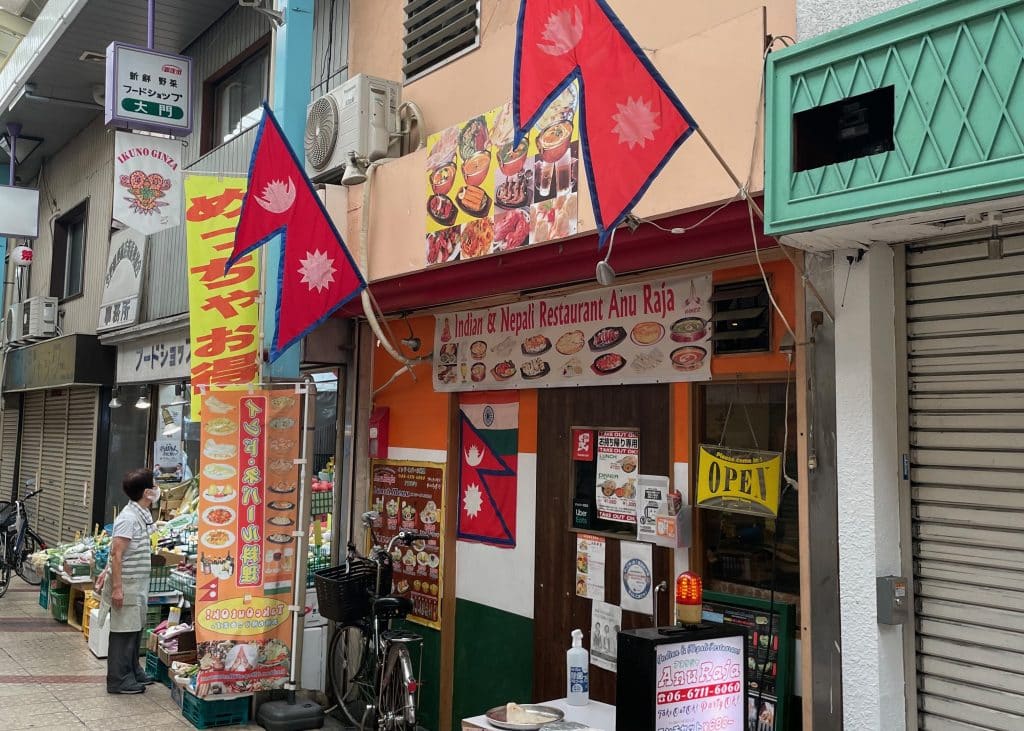
Mom and Pop Shops
The rise of 100-yen shops like Daiso has forced many small stationery stores out of business. Fortunately, local shops like this one still remain, giving children the chance to create lasting memories of buying their first school supplies from a neighborhood store.
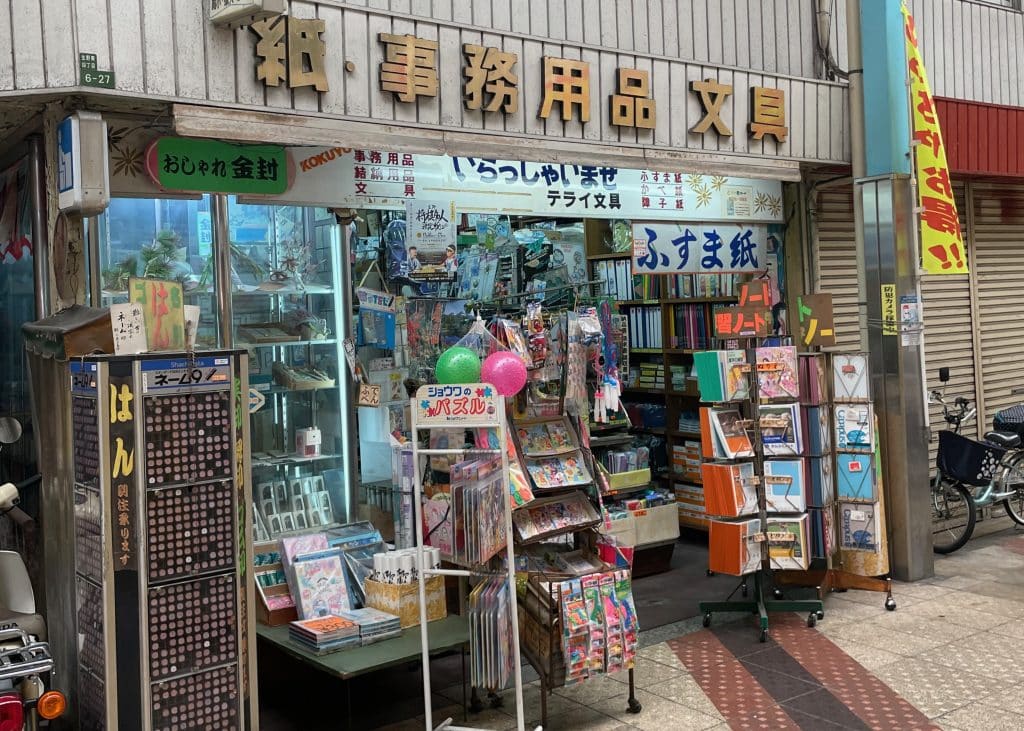
Ikoma Liquor Shop. I was in the mood for a drink after walking around all day, but it was closed. Fortunately, you don’t have to go far to find alcohol in Japan and street drinking is still legal in Osaka. Nothing like wandering around with a nice cold beer in an old shopping arcade, but I fear this shop is shuttered permanently.

Arm Wrestling Gym for Women
Wow! This is something you don’t come across every day: Zero-Ude is an arm wrestling gym exclusively for women run by Shizuko Ashikaga, who won the All Japan Championship seven times in a row. I just know some influencer is going to film a video here and it will get 10 million views on TikTok and YouTube.
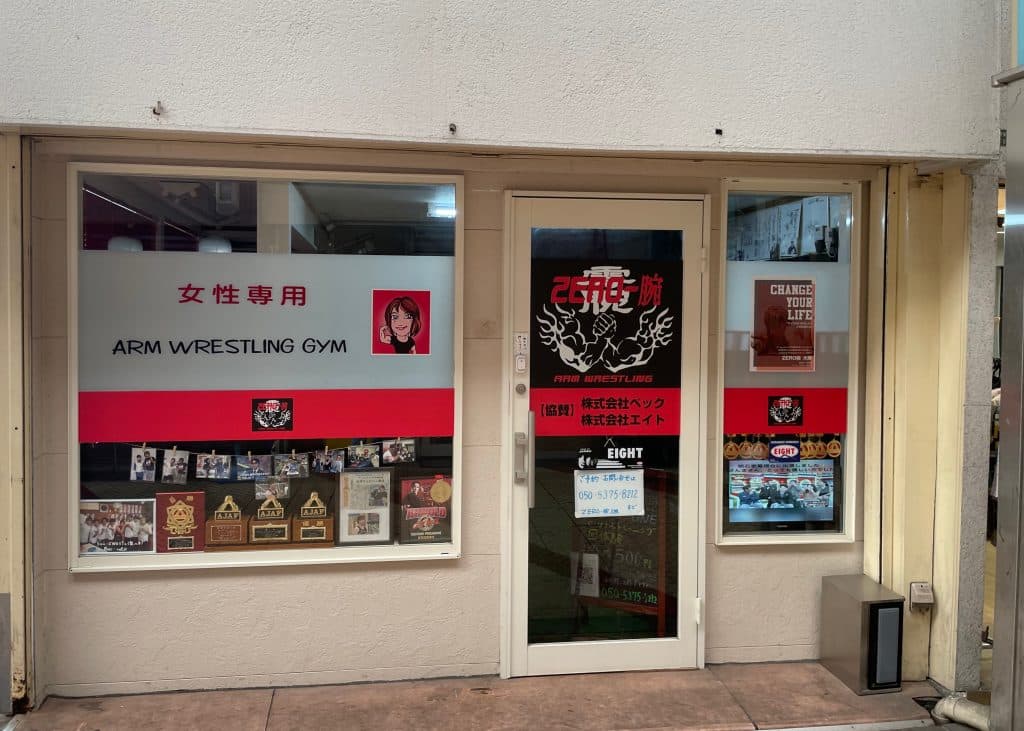
Neighborhood Relics
As I walk through the neighborhood, I come across an old shop with no sign—probably better than a horse with no name. This little corner fruit and vegetable shop still stands, quietly defying time. I imagine it offers much better deals than the local supermarket, and I can’t help but appreciate its charm. The sign of the next shop pictured reads: General Fresh Foods. I bet a day in the life of some of the neighborhood shopkeepers in this area would make a fascinating documentary. Wim Wenders (Perfect Days) would be my choice to direct it.
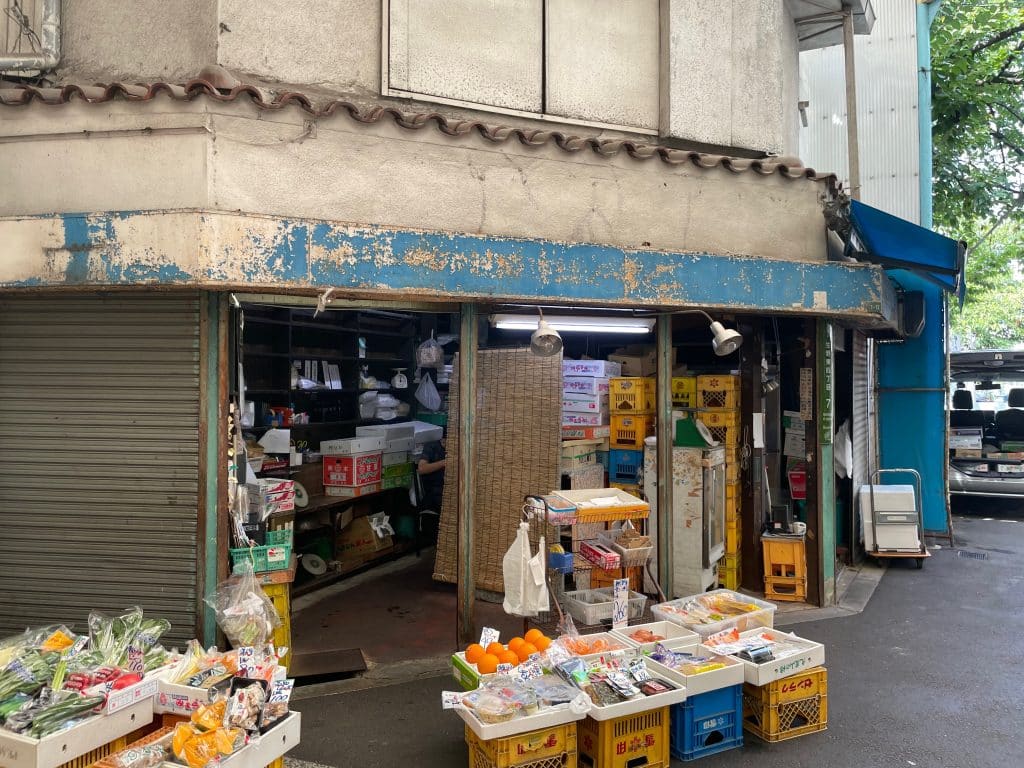
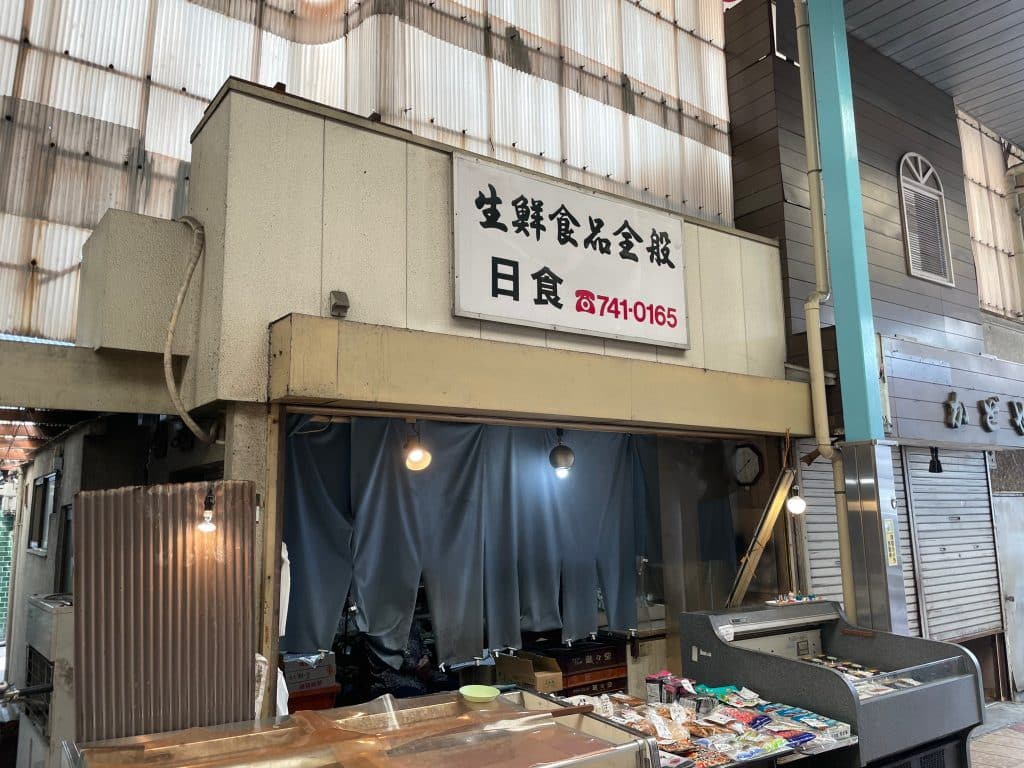
Lost in Osaka
Upon leaving the shopping arcade, I realized I had no idea where I was or how to get back to Teradacho Station. Sure, I could use GPS, but having only owned a smartphone for the past five years, I try to keep my old instincts sharp to avoid becoming too dependent on technology. At this rate, it won’t be long before we have microchips in our brains guiding us down the street.
I come across the Ikuno-yasakajinja-mae bus stop. This is a good, sign (no pun intended) because it meant that a train station is likely to be nearby. Buoyed by my good fortune, I pressed on in my search for transportation so I could make my way back home.

Concrete Gardens
On the quiet streets of downtown Shitamachi areas in Osaka, in front of shuttered shops and abandoned houses, makeshift gardens of plants, flowers, and bushes often spring up. These little acts of kindness, usually created by a well-meaning samaritan, aim to beautify the neighborhood. In many other parts of Japan, such actions might violate countless city ordinances, but in Osaka, no one seems to mind. The National shop pictured here may be long gone, but the flowers outside remain a lovely sight, adding a touch of life to the sleepy corner.

A nearby shop, Coffee White is still very much in business, but the hodgepodge of untended plants in faded, cracked pots and cheap plastic containers outside the shop creates a wabi-sabi effect that is surprisingly pleasing to the eye. In Japan, not everything needs to be pruned and landscaped to perfection. Sometimes, it’s the imperfections that give a space character and charm, adding to its unique beauty.
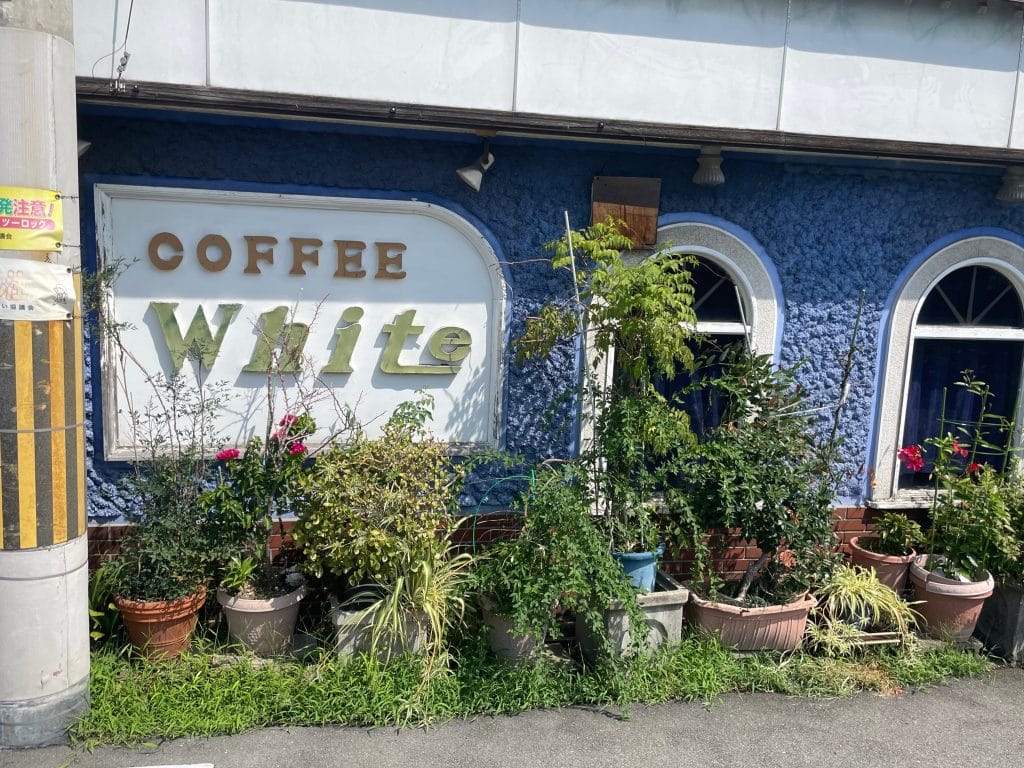
A poster of singer Kaori Shiono is displayed in the window of Cafe White, so I google her online and learn that she is from Osaka and watch one of her videos on YouTube. It’s funny, if a link to her music came up on social media, I probably would have ignored it, but randomly seeing this poster in this unfamiliar area of Osaka made me curious about her music and connection to the shop.
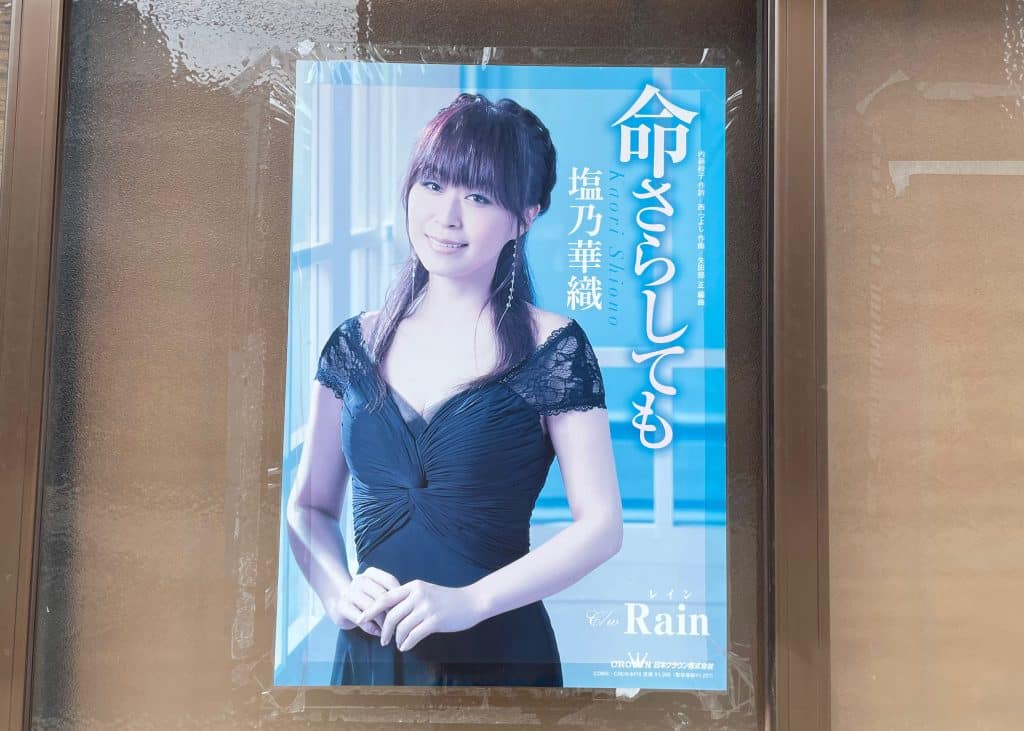
Unintentional Street Art
A little further down I spot some unintentional street art that most people would consider a disgusting eye-sore: a rusty old can filled to the brim with cigarette buts, old candy wrappers, popsicle sticks, and a stray Boss coffee can that someone dumped their instead of walking to the recycling bin. Ever since I read Jerry Gordon’s book I have started to pay more attention to the minute details of Osaka streets.

At last, I come to a train station, but its one that I have never heard of with a difficult name: Tobu-shijomae Station, which is on the Yamatoji Line that goes to JR Namba Station. I decide to hop on the train to make my way back to Teradacho Station instead of walking.
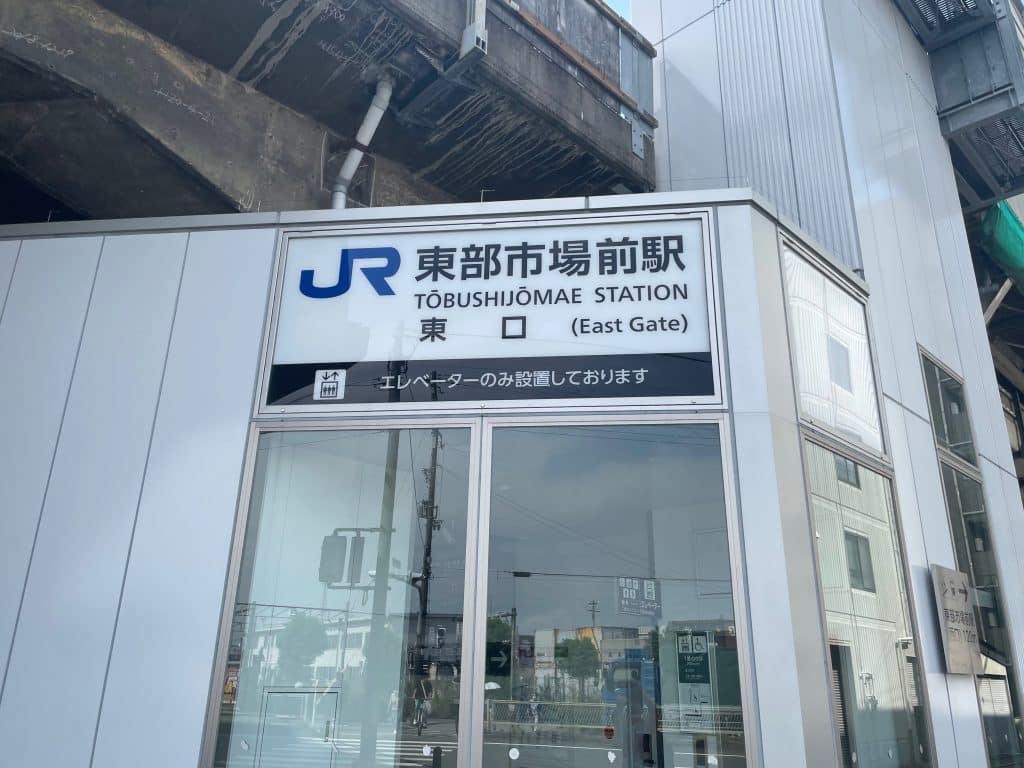
Back to Teradacho Station
It is already dusk when I get off at Teradacho Station. I intended to arrive earlier but got sidetracked after getting off the train at Shin Imamiya for “one drink” which turned into several. Traversing down a side street I spot a “soul music live house and bar called Otis Blue.
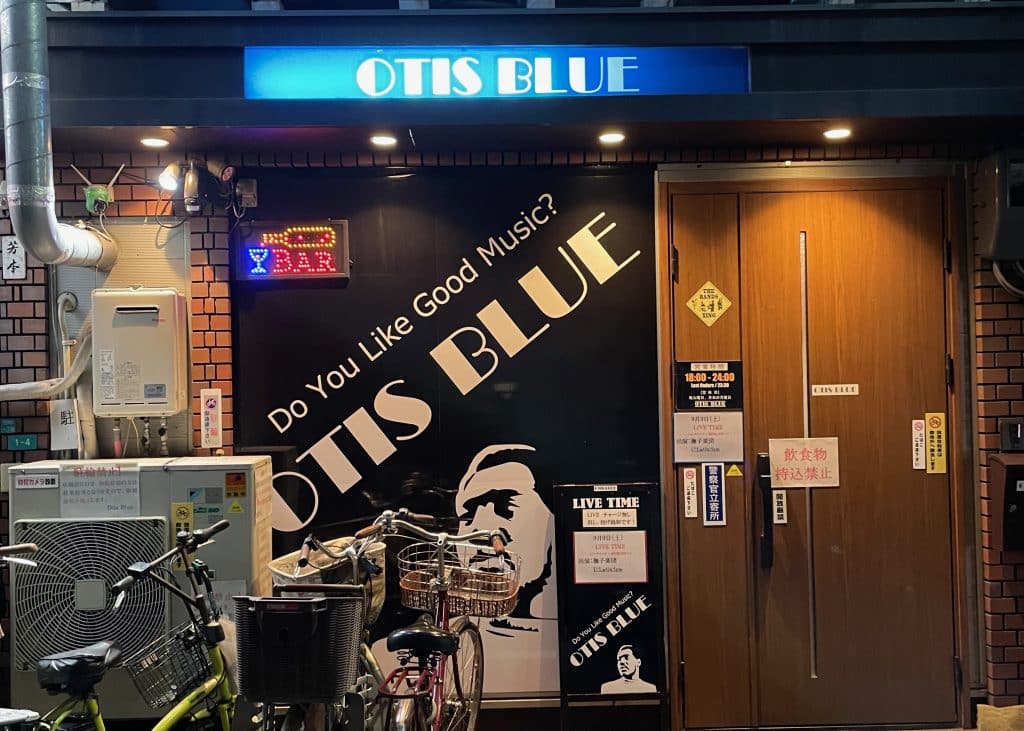
Sakedokoro Sakamoto: A Wonderful Discovery
Address: 1-1-5 Tennoji-cho Kita, Abeno Ward, Osaka City, Japan 545-0001. Tel: 070-5502-9449 Open: 17:00-24:00. Closed: Thurs
A couple of doors down from Otis Blue, I come across a small bar called Sakedokoro Sakamoto, its entrance glowing with colorful lanterns. Sakedokoro (酒処), meaning “a place for sake,” refers to a cozy izakaya-style spot where people can sit and enjoy sake paired with carefully selected dishes. Peeking inside, I spot shelves lined with hundreds of vintage enka cassettes, all in pristine condition. I’m tempted to step in and ask if they’re for sale, but after a long day, I decide to save it for another time.
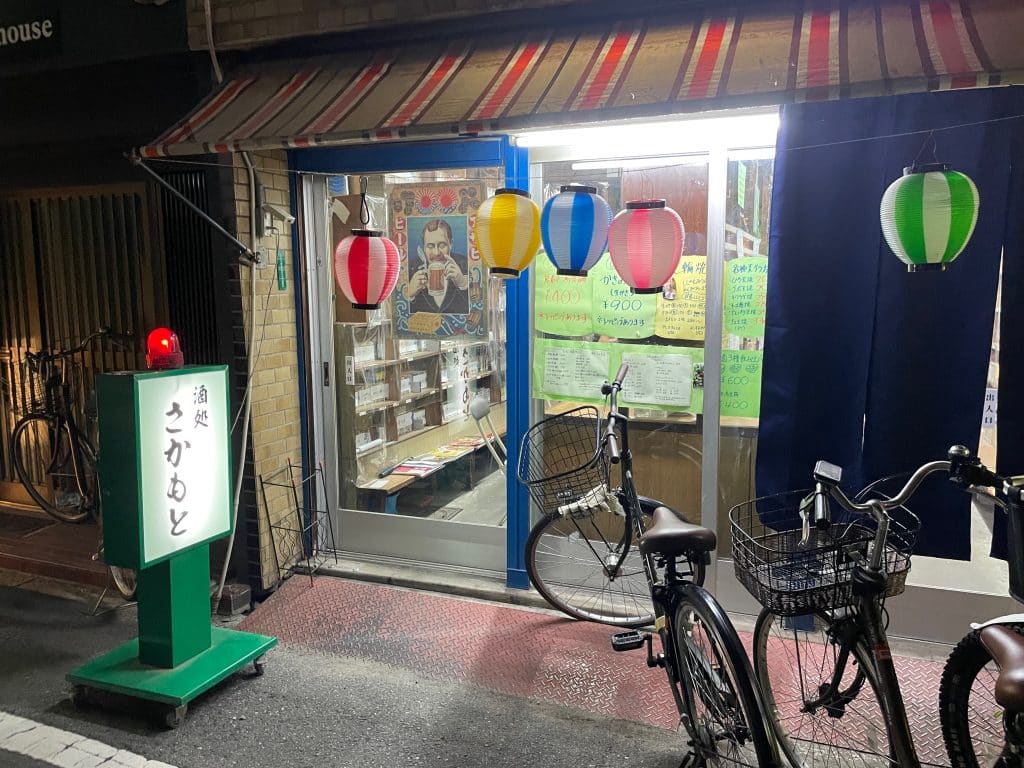
“Erai sunmahennaa”: Meeting Sakamoto-san
I wasn’t able to make it to Teradacho for a few months, but when I finally stopped by in January, I noticed that all the cassette tapes had been removed from the shelves. That’s when I met the owner, Sakamoto-san—a gregarious gentleman born in 1958—who had opened his shop two years earlier at the age of 64, despite having no experience running a bar or restaurant. He told me that the owner of the karaoke café next door had taken the cassettes away a few weeks ago. By then, I no longer cared—because the moment I walked in, I knew this was a special place.

Sakedokoro Sakamoto had just been featured on a television variety special hosted by Sanma Akashiya, one of the most popular comedians in Japan. It’s not hard to understand why Sakamoto-san was chosen for the show. He has a face that exudes character; he could have performed in Yoshimoto comedy skits or played a jolly heavy in a gangster film released by Nikkatsu released in the 1970s. His catchphrase as a novice restaurant owner is “Erai sunmahennaa” in Osaka-ben (Osaka dialect), which roughly translates to “I’m terribly sorry.”
Sonic Youth and Taxi Driver Sake
Sakamoto-san, wearing a T-shirt emblazoned with his signature apologetic catchphrase, is far too modest—but it suits his down-to-earth nature. Since the shop specializes in regional sake from across Japan, I decided to sample three cups for ¥1,000 and asked Sakamoto-san for his personal recommendations. To my surprise, he brought out Taxi Driver sake from Iwate—one I had been meaning to try for ages. The next selection caught my attention with a label featuring one of my favorite bands, Sonic Youth. Even more remarkably, the third bottle showcased artwork by Rina Yoshioka, a Tokyo-based artist known for her erotic illustrations inspired by the Showa Era.
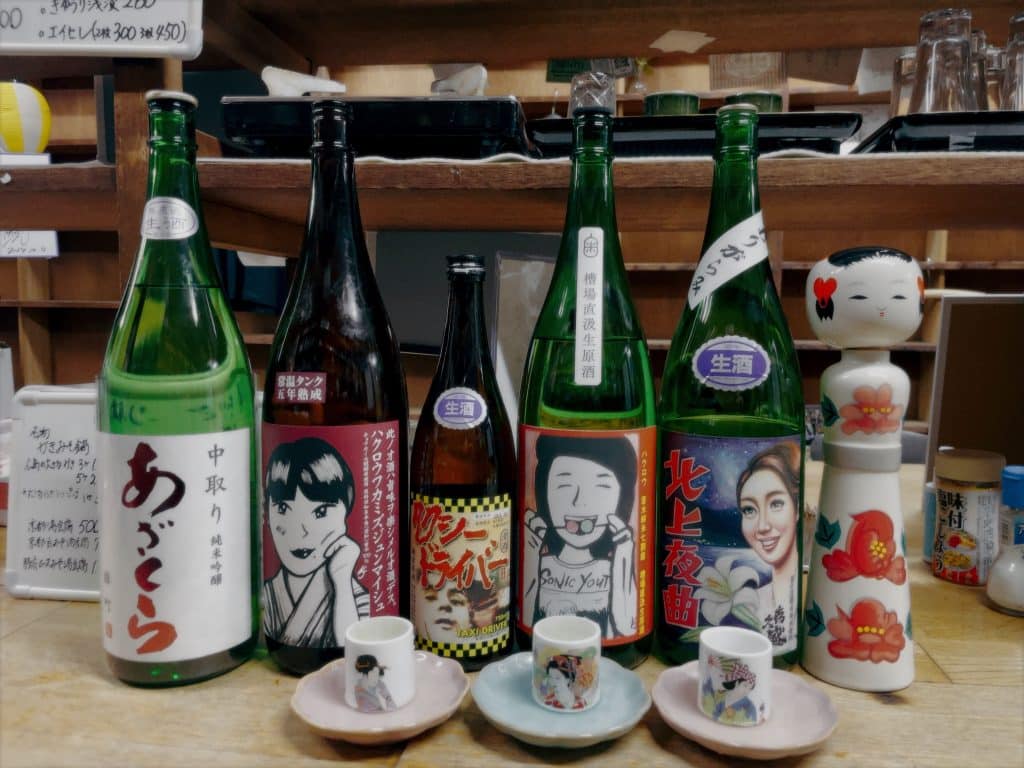
I was so impressed with these sake selections that I immediately asked to sample three more bottles. Sakamoto-san also offers a more affordable option—three cups for ¥600—but I decided to stick with what had worked so well the first time. How did he know exactly what I wanted without even asking?
A Feast for One
The customer next to me ordered a generous portion of nabe hot pot for just ¥900, and it looked tempting. But I went with the niku udon—udon with meat—figuring I wouldn’t get much for just ¥600. But to my surprise, the portion was huge, and the flavor was fantastic.
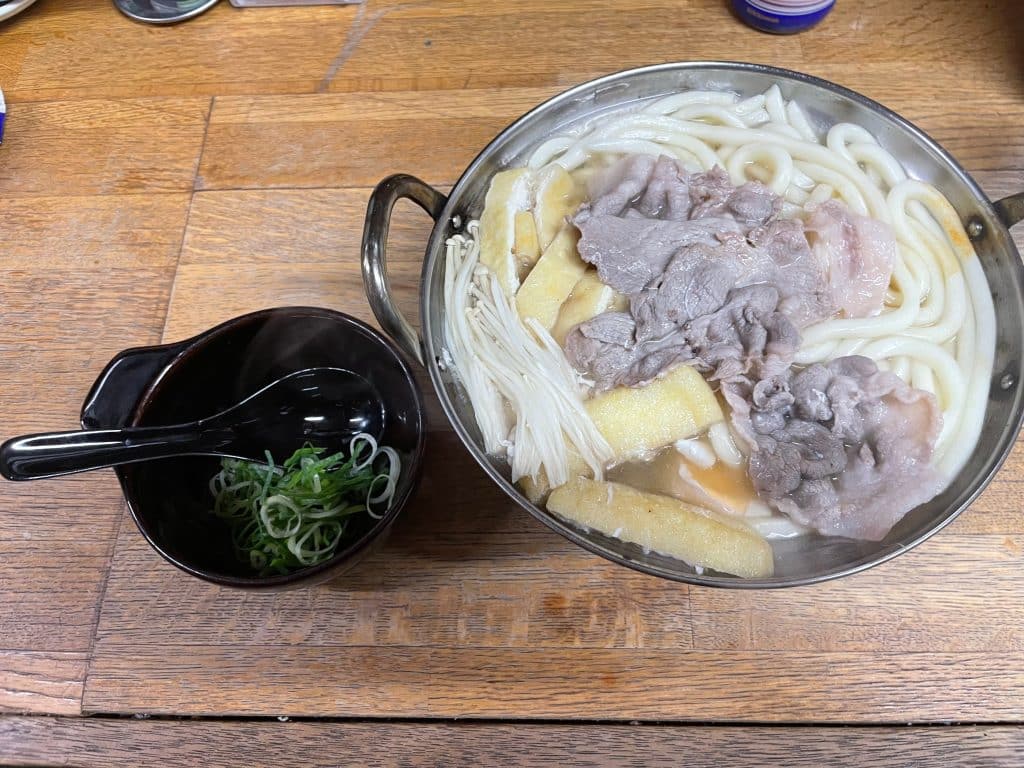
I’ll definitely be back to explore more of the menu at this hidden local gem, tucked away from the hustle and bustle of the big city. Check out Sakamoto’s Instagram here.
Heading Home in in the Rain
When I stepped out of the tiny bar, it was pouring, but I didn’t have an umbrella. The station was less than a minute away and after such a great time, a little rain on my shoulders was a small price to pay.




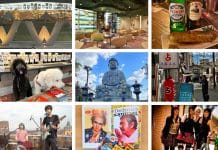
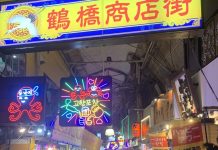
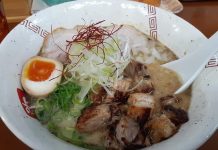
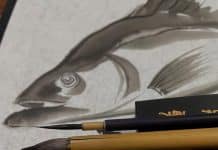
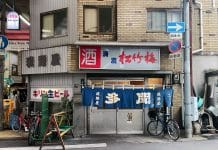

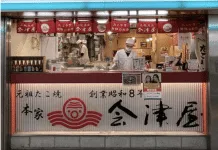
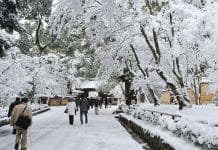
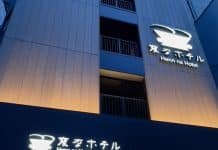
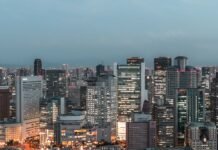
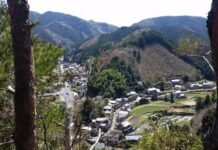
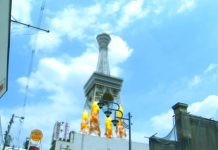
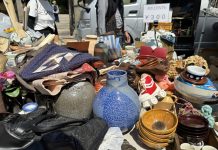





Another great article, Matt!
Interesting. Thanks